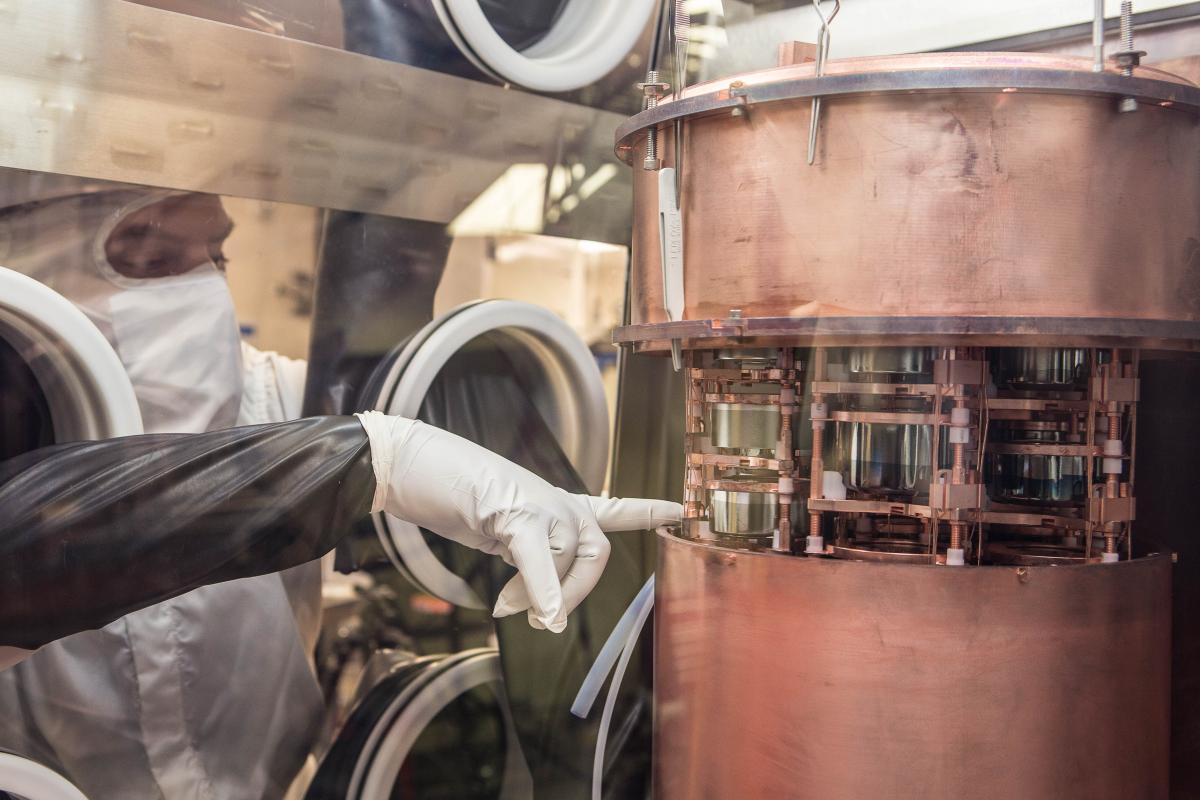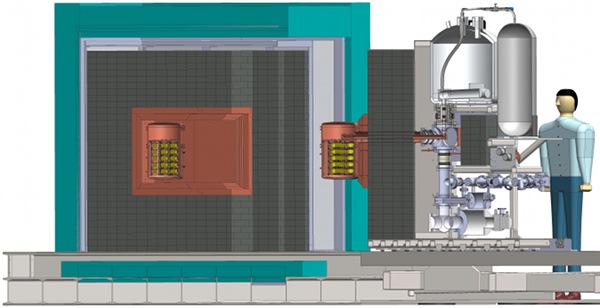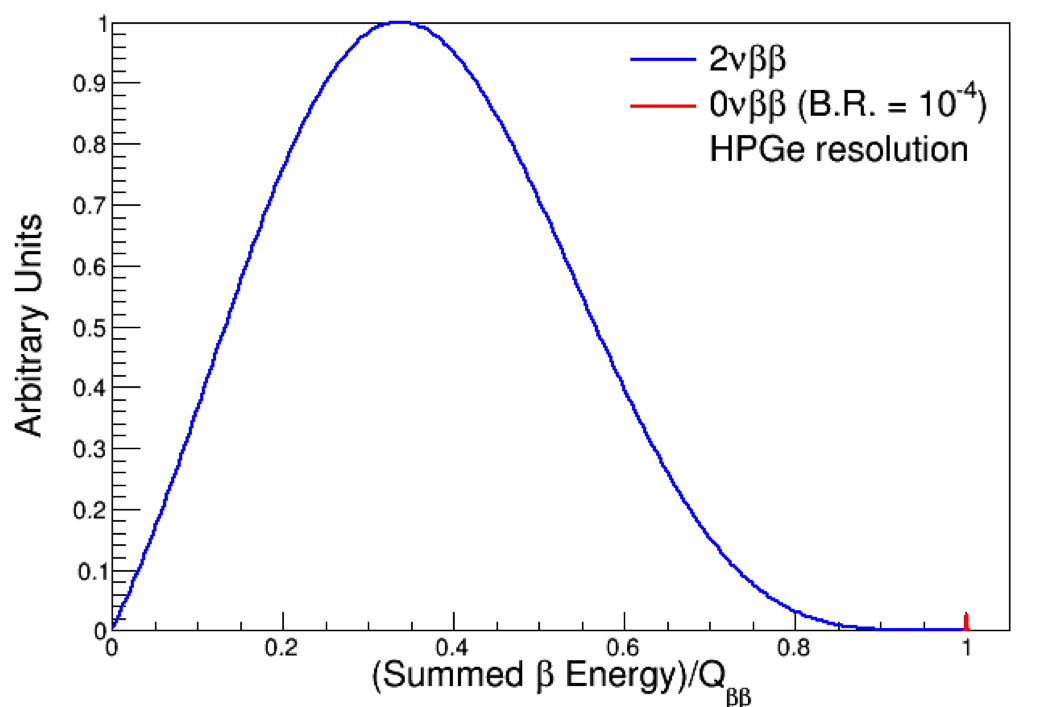The MAJORANA DEMONSTRATOR
|
||
|
A cross-section of the MAJORANA DEMONSTRATOR, showing installation
of a cryostat module.
|
||
  |
||
| The DEMONSTRATOR uses a compact lead and copper shield. |
The IR shield of Cryostat 1 is installed, with all 7 detector strings in place. More pictures can be found at the Sanford Underground Research Facility's MAJORANA gallery: https://pics.sanfordlab.org/mjd |
|
Neutrinos and Neutrinoless Double-beta Decay |
The Feynman diagram for neutrinoless double-beta decay. |
|
MAJORANA is an experiment to search for neutrinoless double-beta decay (0νββ). Neutrinos are fundamental particles that play key roles in the early universe, cosmology and astrophysics, and nuclear and particle physics. Neutrinoless double-beta decay is a decay mode of an atomic nucleus in which two neutrons convert to two protons and two electrons. This process has not been observed, and it is not known whether it exists. If this decay occurs, the neutrino is its own antiparticle, or a Majorana particle. The observation of neutrinoless double-beta decay would determine whether the neutrino is a Majorana particle and provide information on the absolute scale of neutrino mass. If the neutrino is a Majorana particle, neutrinos could provide a mechanism for the matter/anti-matter imbalance of our universe. The search for 0νββ provides the physics community with the opportunity to build on our successes in understanding the neutrino and further our understanding of the universe. |
|
| If 0νββ occurs, it is an extremely rare process. Current experimental results indicate that, in 76Ge, the lifetime of this decay is greater than 2 x 1025 years. To achieve sensitivity to such a rare decay, MAJORANA must have a very low background rate. |
The simulated 0νββ signal in an HPGe detector. |



